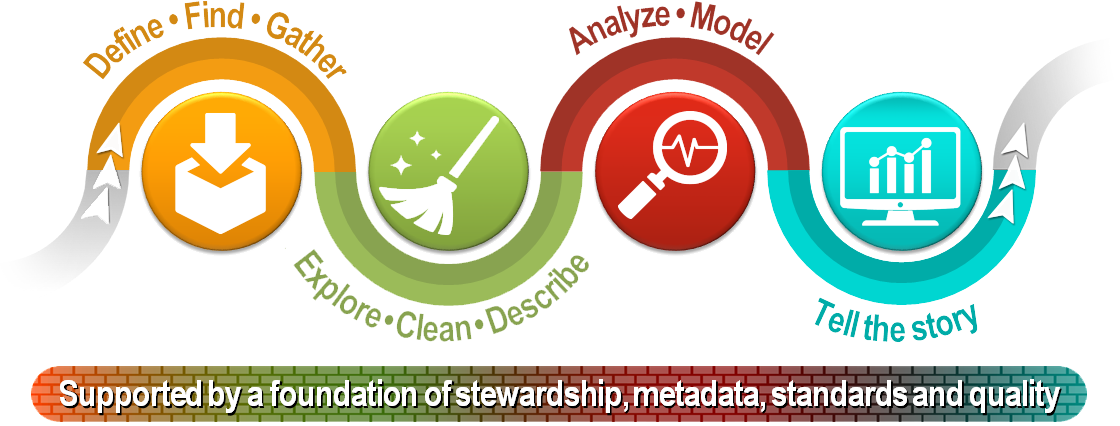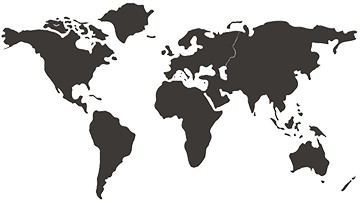Why are we conducting this survey?
This survey collects information on the awareness and use of Intellectual Property (IP) by Canadian enterprises. High levels of intellectual property familiarity along with the strong strategic use of IP are critical to the innovativeness and economic growth of Canadian enterprises. The information gathered in this survey will help the Canadian government establish a baseline on intellectual property familiarity and use among Canadian enterprises, therefore supporting the measurement of the impact of government programs to educate and raise awareness on the benefits and value of intellectual property. This will enable the development of intellectual property policies that contribute to a fair, efficient and competitive marketplace that promotes innovation and competition and instills business, investors and consumer confidence.
This survey is part of the national Intellectual Property Strategy, which was designed to improve access to the intellectual property system by all Canadians, including traditionally underrepresented groups, such as women and Indigenous people.
Your information may also be used by Statistics Canada for other statistical and research purposes.
Your participation in this survey is required under the authority of the Statistics Act.
Other important information
Authorization to collect this information
Data are collected under the authority of the Statistics Act, Revised Statutes of Canada, 1985, Chapter S-19.
Confidentiality
By law, Statistics Canada is prohibited from releasing any information it collects that could identify any person, business, or organization, unless consent has been given by the respondent, or as permitted by the Statistics Act. Statistics Canada will use the information from this survey for statistical purposes only.
Record linkages
To enhance the data from this survey and to reduce the reporting burden, Statistics Canada may combine the acquired data with information from other surveys or from administrative sources.
Data-sharing agreements
To reduce respondent burden, Statistics Canada has entered into data-sharing agreements with provincial and territorial statistical agencies and other government organizations, which have agreed to keep the data confidential and use them only for statistical purposes. Statistics Canada will only share data from this survey with those organizations that have demonstrated a requirement to use the data.
Section 11 of the Statistics Act provides for the sharing of information with provincial and territorial statistical agencies that meet certain conditions. These agencies must have the legislative authority to collect the same information, on a mandatory basis, and the legislation must provide substantially the same provisions for confidentiality and penalties for disclosure of confidential information as the Statistics Act. Because these agencies have the legal authority to compel businesses to provide the same information, consent is not requested and businesses may not object to the sharing of the data.
For this survey, there are Section 11 agreements with the provincial and territorial statistical agencies of Newfoundland and Labrador, Nova Scotia, New Brunswick, Quebec, Ontario, Manitoba, Saskatchewan, Alberta, British Columbia and the Yukon.
The shared data will be limited to information pertaining to business establishments located within the jurisdiction of the respective province or territory.
Section 12 of the Statistics Act provides for the sharing of information with federal, provincial or territorial government organizations.
Under Section 12, you may refuse to share your information with any of these organizations by writing a letter of objection to the Chief Statistician, specifying the organizations with which you do not want Statistics Canada to share your data and mailing it to the following address:
Chief Statistician of Canada
Statistics Canada
Attention of Director, Investment, Science and Technology Division
150 Tunney's Pasture Driveway
Ottawa, Ontario
K1A 0T6
You may also contact us by email at statcan.istdinformation-distinformation.statcan@statcan.gc.ca or by fax at 613-951-8578.
For this survey, there are Section 12 agreements with the statistical agencies of Prince Edward Island, Northwest Territories and Nunavut.
For agreements with provincial and territorial government organizations, the shared data will be limited to information pertaining to business establishments located within the jurisdiction of the respective province or territory.
Important features
To navigate the questionnaire
Image of the Previous and Next buttons
Use the Previous and Next buttons located at the bottom right of each page.
Do not use the navigation buttons at the top of your browser or the corresponding shortcut keys.
Based on your answers to certain questions, the questionnaire will automatically skip any questions or sub-questions that do not apply to your situation.
Session timeout
After 2 hours of inactivity, your session will time out. You will not be able to access any unsaved information.
To save your information
Image of the Save and finish later button
If you cannot complete the questionnaire in one session, you can save the information you have entered by pressing the Save and finish later button at the bottom left of any page on which you are asked to enter information. You can then resume your session at another time.
Please be advised that information from partially completed or unsaved questionnaires may be retained and used for statistical and research purposes.
Definitions and explanations
Image of the help button
A help button is available for certain questions. Press this button for additional information or clarification.
Answering this questionnaire
Reporting instructions
- Report dollar amounts in thousands of Canadian dollars.
- Report dollar amounts rounded to the nearest dollar.
- Report all personnel numbers in full-time equivalent (FTE).
- Report all FTE numbers rounded to the nearest whole number.
- Percentages should be rounded to whole numbers.
- When precise figures are not available, provide your best estimates.
- Enter '0' if there is no value to report.
Who should complete this questionnaire?
This questionnaire should be completed by the business owners or authorised representatives of the enterprises such as senior managers with a thorough knowledge of its intellectual property awareness and use.
Business or organization and contact information
1. Verify or provide the business or organization's legal and operating name and correct where needed.
Note: Legal name modifications should only be done to correct a spelling error or typo.
Note: Press the help button (?) for additional information.
Legal name
Operating name (if applicable)
2. Verify or provide the contact information of the designated business or organization contact person for this questionnaire and correct where needed.
Note: The designated contact person is the person who should receive this questionnaire. The designated contact person may not always be the one who actually completes the questionnaire.
First name
Last name
Title
Preferred language of communication
Mailing address (number and street)
City
Province, territory or state
Postal code or ZIP code (Format: Letter digit letter space digit letter digit or 5 digits dash 4 digits)
Example: A9A 9A9 or 12345-1234
Country
Email address
Example: user@example.gov.ca
Telephone number (including area code)(Enter all ten numbers without spaces or special characters)
Example: 123-123-1234
Extension number (if applicable)
The maximum number of characters is 10.
Fax number (including area code)(Enter all ten numbers without spaces or special characters)
Example: 123-123-1234
3. Verify or provide the current operational status of the business or organization identified by the legal and operating name above.
Operational
Not currently operational e.g., temporarily or permanently closed, change of ownership
4. Verify or provide the current main activity of the business or organization identified by the legal and operating name above.
Note: The described activity was assigned using the North American Industry Classification System (NAICS).
Note: Press the help button (?) for additional information, including a detailed description of this activity complete with example activities and any applicable exclusions.
NAICS description text
Description and examples
This is the current main activity
This is not the current main activity
Business structure and executive demographics
Question 1. In what year was this business first established?
If precise figures are not available, provide your best estimate.
First established refers to the date when this business was first registered.
Year
Question 2. Which of the following business structures best describes this business?
Sole proprietorship - A sole proprietorship is a business with a single owner (who owns 100% of the business) who alone is responsible for all liabilities-legal debts a company owes to third-party creditors.
Partnership - A partnership is a business established by two or more owners.
Corporation that is incorporated under a federal or provincial charter - A corporation is a legally established business that can own assets and incur debt. The business is a legal entity separate from its shareholders.
Co-operative - A co-operative is a business that is owned, organized and controlled by an association of members.
Include Co-operatives of incorporated businesses.
Other
Question 3. Does this business have a board of directors?
Question 4. Are there any women on this business's board of directors?
Question 5. Are there any First Nations people, Métis or Inuk (Inuit) on this business's board of directors?
First Nations people include both status and non-status Indians.
Question 6. What is the gender of the primary decision maker for this business?
Gender refers to current gender which may be different from sex assigned at birth and may be different from what is indicated on legal documents.
The primary decision maker is the person primarily responsible for making decisions about this business.
This could be the majority owner, chairman of the board of directors, or general manager of this business.
In the case of equal partnership, select one partner and report for that individual.
- Male
- Female
- Another gender
- Don't know
Question 7. Does the primary decision maker of this business identify as a First Nations person, Métis or Inuk (Inuit)?
First Nations person include both status and non-status Indians.
The primary decision maker is the person responsible for making decisions about this business. This could be the majority owner, chairman of the board of directors, or general manager of this business.
In the case of equal partnership, report for the same partner as reported in question 6.
Question 8. Was the primary decision maker for this business born in Canada?
The primary decision maker is the person primarily responsible for making decisions about this business. This could be the majority owner, chairman of the board of directors, or general manager of this business.
In the case of equal partnership, report for the same partner as reported in question 6.
Question 9. How many years has the primary decision maker for this business resided in Canada?
The primary decision maker is the person primarily responsible for making decisions about this business.
This could be the majority owner, chairman of the board of directors, or general manager of this business.
Round to the nearest year, if less than one year please round to one.
Number of years
OR
Does not reside in Canada
OR
Don't know
Question 10. Is this a publicly owned business?
A publicly owned business is when ownership is dispersed among the general public in shares of stock which are freely traded on a stock exchange or in over-the-counter markets.
Question 11. What is the gender composition of the ownership of this business?
If precise figures are not available, provide your best estimate.
Enter '0' if there is no value to report.
Percentage
a. Male %
b. Female %
c. Another gender %
Total %
Question 12. What percentage of this business's ownership is comprised of First Nations people, Métis or Inuk (Inuit)?
First Nations people include both status and non-status Indians.
Enter '0' if there is no value to report.
Percentage %
OR
Don't know
Intellectual property awareness
Question 13. Which of the following types of intellectual property are you familiar with?
Please answer based on your familiarity regardless of whether or not this business owns these types of intellectual property.
Select all that apply.
- Patents
- Trademarks
- Industrial designs
- Copyrights
- Trade secrets
- OR
- None of the above
The next question intends to measure the general familiarity with intellectual property. The purpose of collecting this information is to help evaluate impacts of Canadian Government's programs to educate and raise awareness on the value of intellectual property. Answer to the best of your abilities even if you are unsure about the answer.
Question 14. To the best of your knowledge, which intellectual property method would be best suited to protecting the following ideas, information, designs or creative works?
The following questions uses a rating scale for each answer. Navigate through each question heading and select an answer. The answers available include:
Blank table
| |
Patents |
Trademarks |
Industrial designs |
Copyrights |
Don't know |
|---|
| a. A brand name or logo |
|
|
|
|
|
|---|
| b. An invention e.g., a bag-less vacuum cleaner |
|
|
|
|
|
|---|
| c. Creative works e.g., photos, songs or print material |
|
|
|
|
|
|---|
| d. The visual appearance of a manufactured product e.g., a cell phone case or a tea cup |
|
|
|
|
|
|---|
Question 15. "During the three years 2017 to 2019", did this business seek information, guidance or advice on patents, trademarks or other types of intellectual property?
Intellectual property is a distinct form of creative endeavor such as an invention, literary and artistic work, image or design that may be protected by formal legislation or the common law (e.g., a patent, trademark, copyright, industrial design, integrated circuit topography, plant breeders' rights, geographical indications) or that has provided commercial value (e.g., know-how, trade secrets).
"During the three years 2017 to 2019" refers to the calendar years January 1, 2017 to December 31, 2019.
Question 16. "During the three years 2017 to 2019", what sources were sought by this business to obtain information, guidance or advice on patents, trademarks or other types of intellectual property?
"During the three years 2017 to 2019" refers to the calendar years January 1, 2017 to December 31, 2019.
Select all that apply.
- Canadian Intellectual Property Office
- Other Canadian government offices e.g., federal, provincial, municipal
- Foreign Intellectual Property Offices e.g., United States Patent and Trademark Office, World Intellectual Property Organization
- Trade commissioner services
- Business incubators or accelerators or IP clinics
- In-house legal counsel or legal departments Exclude external law firms or lawyers.
- External law firms or lawyers Exclude in-house legal counsel or legal departments.
- Intellectual property strategists
- Patent or trademark agents
- Industry associations, chambers of commerce or business partner networks
- Other sources e.g., friends, peers, mentors, words of mouth, other online sources
Question 17. Was the information, guidance or advice sufficient for this business to make an informed decision related to its patents, trademarks or other types of intellectual property?
Sufficient means that this business received the intellectual property-related information, guidance or advice it needed from the sources it solicited (i.e., sources that were selected in question 15).
Question 18. On what intellectual property matters did this business seek information, guidance or advice?
Select all that apply.
- Identification of this business's intellectual property
- Identify in which countries to protect intellectual property
- Identify funding sources for the protection of intellectual property
- Options for funding the protection of intellectual property
- How to manage protecting intellectual property without the help of a professional e.g., intellectual property agent or lawyer
- Navigate the formal process of protecting intellectual property
- How to develop a strategy related to intellectual property for this business
- Detect infringement of intellectual property rights
- Enforce intellectual property rights in case of infringement by other
- Other matters related to intellectual propert
Question 19. Over the next three years, 2020 to 2022, from which of the following sources does this business plan to seek information, guidance or advice on intellectual property?
Over the next three years 2020 to 2022 refers to the calendar years January 1, 2020 to December 31, 2022.
Select all that apply.
- Canadian Intellectual Property Office
- Other Canadian government offices e.g., federal, provincial, municipal
- Foreign Intellectual Property Offices e.g., United States Patent and Trademark Office, World Intellectual Property Organization
- Trade commissioner services
- Business incubators or accelerators or IP clinics
- In-house legal counsel or legal departments Exclude external law firms or lawyers.
- External law firms or lawyers Exclude in-house legal counsel or legal departments.
- Intellectual property strategists
- Patent or trademark agents
- Industry associations, chambers of commerce or business partner networks
- Other sources e.g., friends, peers, mentors, words of mouth, other online sources
- OR
- No plans to seek sources to obtain information, guidance or advice on intellectual property
- Don't know
Intellectual property use
Question 20. Which of the following types of intellectual property does this business own in Canada?
Intellectual property is a distinct form of creative endeavor such as an invention, literary and artistic work, image or design that may be protected by formal legislation or the common law (e.g., a patent, trademark, copyright, industrial design, integrated circuit topography, plant breeders' rights, geographical indications) or that has provided commercial value (e.g., know-how, trade secrets).
Select all that apply.
- Patents - A set of rights granted by a national government to an inventor or their assignee for a limited period of time in exchange for a public disclosure of that invention.
- Industrial designs - A combination of the visual features of shape, configuration pattern or ornament applied to a finished article made by hand, tool or machine.
- Copyrights - A set of exclusive rights granted to the author or creator of an original work.
- Trademarks - Refer to words, designs, numbers, or shapes that are used to distinguish goods or services of one person or organization from those of others
- Integrated circuit topographies - Three-dimensional configurations of electronic circuits embodied in integrated circuit products of layout designs.
- Plant breeders' rights - Right that allows plant breeders to protect new varieties of plants.
- Geographical indications - A sign used on products that have a specific geographical origin and possess qualities or a reputation that are due to that origin.
- OR
- None of the above
Question 21. Which of the following types of intellectual property does this business own outside of Canada?
Intellectual property is a distinct form of creative endeavor such as an invention, literary and artistic work, image or design that may be protected by formal legislation or the common law (e.g., a patent, trademark, copyright, industrial design, integrated circuit topography, plant breeders' rights, geographical indications) or that has provided commercial value (e.g., know-how, trade secrets).
Select all that apply.
- Patents - A set of rights granted by a national government to an inventor or their assignee for a limited period of time in exchange for a public disclosure of that invention.
- Industrial designs - A combination of the visual features of shape, configuration pattern or ornament applied to a finished article made by hand, tool or machine.
- Copyrights - A set of exclusive rights granted to the author or creator of an original work.
- Trademarks - Refer to words, designs, numbers, or shapes that are used to distinguish goods or services of one person or organization from those of others
- Integrated circuit topographies - Three-dimensional configurations of electronic circuits embodied in integrated circuit products of layout designs.
- Plant breeders' rights - Right that allows plant breeders to protect new varieties of plants.
- Geographical indications - A sign used on products that have a specific geographical origin and possess qualities or a reputation that are due to that origin.
- OR
- None of the above
Question 22. "During the three years 2017 to 2019", did this business file for or register any type of intellectual property protection?
Include patents, trademarks, industrial designs, copyrights, integrated circuit topographies, plant breeders' rights and geographical indications.
"During the three years 2017 to 2019" refers to the calendar years January 1, 2017 to December 31, 2019.
Question 23. "During the three years 2017 to 2019", which of the following types of intellectual property protection did this business file for or register?
"During the three years 2017 to 2019" refers to the calendar years January 1, 2017 to December 31, 2019.
Select all that apply.
- Patents
- Trademarks
- Industrial designs
- Copyrights
- Integrated circuit topographies
- Plant breeders' rights
- Geographical indications
- Other types of intellectual property protection
Question 24. "During the three years 2017 to 2019", did this business experience any difficulties when filing for or registering intellectual property protection?
Include difficulties experienced when filing for or registering intellectual property protection either in or outside of Canada.
"During the three years 2017 to 2019" refers to the calendar years January 1, 2017 to December 31, 2019.
Question 25. "During the three years 2017 to 2019", what were the difficulties experienced when filing for or registering intellectual property protection in Canada?
"During the three years 2017 to 2019" refers to the calendar years January 1, 2017 to December 31, 2019.
Select all that apply.
- Limited knowledge of the intellectual property application procedures
- Lack of guidance
- Length of intellectual property right filling or registration process
- Financial costs associated with the procedure
- Complexity of the procedure
- Initial application did not meet requirements
- Other difficulties
- OR
- No difficulties encountered in Canada
Question 26. "During the three years 2017 to 2019", what were the difficulties experienced when filing for or registering intellectual property protection outside of Canada?
''During the three years 2017 to 2019" refers to the calendar years January 1, 2017 to December 31, 2019.
Select all that apply.
- Limited knowledge of the intellectual property application procedures
- Lack of guidance
- Length of intellectual property right filling or registration process
- Financial costs associated with the procedure
- Complexity of the procedure
- Initial application did not meet requirements
- Other difficulties
- OR
- No difficulties encountered outside of Canada
Question 27. "During the three years 2017 to 2019", which of the following strategic activities regarding intellectual property did this business conduct?
''During the three years 2017 to 2019" refers to the calendar years January 1, 2017 to December 31, 2019.
Select all that apply.
- Including any references to intellectual property in employment agreements
- Discussing intellectual property with employees
- Assigning monetary value to any intellectual property
- Training staff on intellectual property
- Verifying that this business is not infringing on other's intellectual property
- Other activities
- OR
- No strategic activities conducted
- OK
- Don't know
Question 28. In 2019, did this business have a formal strategy to protect its patents, trademarks or other types of intellectual property (either separate from or as part of the overall business plan)?
''In 2019'' refers to the calendar year, January 1 to December 31, 2019.
Question 29. "During the three years 2017 to 2019", did this business have intellectual property that it decided not to formally protect?
Include intellectual property that this business decided not to formally protect either in or outside of Canada.
"During the three years 2017 to 2019" refers to the calendar years January 1, 2017 to December 31, 2019.
Question 30. "During the three years 2017 to 2019", for which of the following reasons did this business decide not to formally protect its intellectual property?
Include intellectual property that this business decided not to formally protect either in or outside of Canada.
"During the three years 2017 to 2019" refers to the calendar years January 1, 2017 to December 31, 2019.
Select all that apply.
- Limited knowledge of the intellectual property application procedures
- Financial costs associated with obtaining intellectual property rights
- Length of the process to obtain intellectual property rights
- Complexity of rules and laws related to intellectual property
- Difficulties enforcing intellectual property rights
- Risk of litigation
- Prefer to keep the intellectual property as a trade secret
- No benefits seen in protecting this business's intellectual property
- Other reasons
Question 31. "During the three years 2017 to 2019", in which of the following activities related to intellectual property ownership did this business engage?
''During the three years 2017 to 2019" refers to the calendar years January 1, 2017 to December 31, 2019.
Select all that apply.
- Buying intellectual property
- Selling intellectual property
- Making use of an online intellectual property marketplace
- Making use of open source or other freely available intellectual property
- Participating in a patent pool or patent collective
- Participating in a partnership, joint venture, strategic alliance or other form of intellectual property-related collaboration
- Buying or selling rights through a copyright collective society
- Other intellectual property ownership-related activities
- OR
- No engagement in intellectual property ownership-related activities
- OR
- Don't know
Question 32. In this business's fiscal year ending in 2019, which of the following activities related to intellectual property did this business have expenditures on?
This business's fiscal year end date should fall between January 1, 2019 and December 31, 2019.
Select all that apply.
- Obtaining information, guidance, or advice on intellectual property
- Conducting an intellectual property search
- Filing for or registering intellectual property with an intellectual property office
- Maintaining or renewing intellectual property right with an intellectual property office
- Drafting intellectual property agreements
- Enforcing intellectual property rights
- Responding to demand letters
- Other intellectual property-related activities
- OR
- No expenditures
- OR
- Don't know
Question 33. "During the three years 2017 to 2019", did this business have any intellectual property licensing agreements in place?
Licenses defines the terms under which patents, trademarks, and copyrights are licensed by one party to another for exchange of one-time payment or a continuous fee-structure.
Include the licensing of intellectual property from others and the licensing of intellectual property to others.
"During the three years 2017 to 2019" refers to the calendar years January 1, 2017 to December 31, 2019.
Question 34. "During the three years 2017 to 2019", which types of intellectual property rights did this business license
Include the licensing of intellectual property from others and the licensing of intellectual property to others.
"During the three years 2017 to 2019" refers to the calendar years January 1, 2017 to December 31, 2019.
Select all that apply.
- Patents
- Trademarks
- Copyrights
- Other rights
Question 35. "During the three years 2017 to 2019", which of the following licensing agreements were important to this business
''During the three years 2017 to 2019" refers to the calendar years January 1, 2017 to December 31, 2019.
Select all that apply.
- Licensing intellectual property from other Canadian organizations
- Licensing intellectual property to other Canadian organizations
- Licensing intellectual property from other foreign organizations
- Licensing intellectual property to other foreign organizations
- OR
- None of the above
Importance of intellectual property
Question 36. "During the three years 2017 to 2019", how important was this business's intellectual property (IP) to the following activities
''During the three years 2017 to 2019" refers to the calendar years January 1, 2017 to December 31, 2019.
The following questions uses a rating scale for each answer. Navigate through each question heading and select an answer. The answers available include:
Blank table
| |
IP was very important |
IP was important |
IP was somewhat important |
IP was not at all important |
Don't know |
Not applicable |
|---|
| a. Research and development (R&D) |
|
|
|
|
|
|
|---|
| b. Innovation |
|
|
|
|
|
|
|---|
| c. Product (goods or services) development |
|
|
|
|
|
|
|---|
| d. Secure funds from external investment sources |
|
|
|
|
|
|
|---|
| e. Export of goods or services |
|
|
|
|
|
|
|---|
| f. Import of goods or services |
|
|
|
|
|
|
|---|
g. Marketing and promotion
h. Brand protection |
|
|
|
|
|
|
|---|
| i. Maintaining competitiveness |
|
|
|
|
|
|
|---|
| j. Entering new markets |
|
|
|
|
|
|
|---|
Question 37. "During the three years 2017 to 2019", how did this business's intellectual property contribute to its performance
''During the three years 2017 to 2019" refers to the calendar years January 1, 2017 to December 31, 2019.
Select all that apply.
- Increased employment
- Increased revenues
- Increased business value
- Expanded markets
- Facilitated access to financing
- Provided new opportunities for collaboration with other businesses
- Strengthened long-term business prospects
- Positioned the business for acquisition
- Other contributions
- OR
- No contributions to this business's performance
- OR
- Don't know or cannot determine contributions
Question 38. "During the three years 2017 to 2019", how did this business's intellectual property hinder its performance
''During the three years 2017 to 2019" refers to the calendar years January 1, 2017 to December 31, 2019.
Select all that apply.
- Did not prevent infringement of intellectual property
- Increased financial costs of maintenance and monitoring of this business's intellectual property portfolio
- Caused legal disputes that were either expensive or time consuming
- Delayed market entry of new products (loss of revenues)
- Diverted resources away from more productive or value creating activities
- Other hindrances
- OR
- No hindrances to this business's performance
- OR
- Don't know or cannot determine hindrances
Business structure and activities
Question 39. "During the three years 2017 to 2019", what was the average yearly change of this business's total revenues
If precise figures are not available, provide your best estimate.
"During the three years 2017 to 2019" refers to the calendar years January 1, 2017 to December 31, 2019.
- Decrease in revenue
- No change in revenue
- Between 1% and 10% increase
- Between 11% and 20% increase
- 21% or more increase in revenue
- Don't know
- Not applicable e.g., business is less than three years old
Question 40. In 2019, did this business sell goods or services to customers located in the following geographic markets
Customer location is the location where the goods or services will ultimately be used.
If ultimate customer location is not known, the following are acceptable substitutes:
- shipping destination
- client's billing address
- location of this business's retail customers
- location of this business's warehouses/distribution centres.
Select all that apply.
- Province or territory in which this business is registered
- Other Canadian provinces or territories (rest of Canada)
- United States of America
- Europe
- Japan
- China
- Other countries
- OR
- No sales
Question 41. In 2019, did this business sell goods or services
''In 2019'' refers to the calendar year, January 1 to December 31, 2019.
Question 42. In 2019, did this business sell any of the following goods or services
''In 2019'' refers to the calendar year, January 1 to December 31, 2019.
Question 43. Over the next three years, 2020 to 2022, does this business intend to expand to new geographic markets within the following locations
''Over the next three years 2020 to 2022'' refers to the calendar years January 1, 2020 to December 31, 2022.
Select all that apply.
- Province or territory in which this business is registered
- Other Canadian provinces or territories (rest of Canada)
- United States of America
- Europe
- Japan
- China
- Other countries
- OR
- No intention to expand to new markets
- OR
- Don't know
Question 44. In 2019, did this business make payments to suppliers for the purchase of goods or services located in the following geographic markets
''In 2019'' refers to the calendar year, January 1 to December 31, 2019.
Select all that apply.
- Province or territory in which this business, or its headquarters, is located
- Other Canadian provinces or territories (rest of Canada)
- United States of America
- Europe
- Japan
- China
- Other countries
- OR
- No purchases of goods or services
Innovation and funding
Question 45. "During the three years 2017 to 2019", were new or improved goods, services or business processes introduced onto the market or brought into use by this business
Include new or improved goods, services or business processes that:
- differed significantly from this business's previous goods, services or business process
- were new to this business and not necessarily new to its business industry or markets
- were developed by this business or other organizations.
"During the three years 2017 to 2019" refers to the calendar years January 1, 2017 to December 31, 2019.
New or improved goods
Tangible objects and some knowledge-capturing products over which ownership rights can be established and whose ownership can be transferred through market transactions. Significant changes to the design of a good.
Exclude the simple resale of new goods purchased from other businesses and changes of a solely aesthetic nature.
New or improved services
Services are intangible activities that are produced and consumed simultaneously and that change the conditions (e.g., physical, psychological) of users. The engagement of users through their time, availability, attention, transmission of information, or effort is often a necessary condition that leads to the co-production of services by users and the enterprise. The attributes or experience of a service can therefore depend on the input of users. Services can also include some knowledge-capturing products.
New or improved business processes
Implementation of new or improved production processes for goods or services, distribution or logistics processes, marketing or sales methods, information and communication systems, strategic and general management practices, and product or business process development.
Question 46. "During the three years 2017 to 2019", did this business have expenditures on research and experimental development (R&D)
Research and experimental development (R&D) comprise creative and systematic work undertaken in order to increase the stock of knowledge – including knowledge of humankind, culture and society – and to devise new applications of available knowledge.
"During the three years 2017 to 2019" refers to the calendar years January 1, 2017 to December 31, 2019.
Question 47. "During the three years 2017 to 2019", did this business receive private sector funding from either Canadian or foreign sources to support the commercialization of new or improved goods or services?
Please include funding from banks, caisses populaires or credit unions, other financial institutions, venture capital providers and individuals or groups unrelated to the business, such as angel investors.
Question 48. "During the three years 2017 to 2019", did this business receive any government funding?
Include government grants, contributions, subsidies, tax credits, tax incentives, export incentives, loans or any other type of government funds received by this business.
Include all levels of government (i.e., federal, provincial, municipal).
"During the three years 2017 to 2019" refers to the calendar years January 1, 2017 to December 31, 2019.
Comments and feedback
Question 49. How many people were consulted for the completion of this questionnaire?
Number of people
Notification of intent to extract web data
Question 50. Does this business have a website?
Contact person
Question 51. Statistics Canada may need to contact the person who completed this questionnaire for further information.
Is (respondent name) the best person to contact?
Feedback
Question 52. How long did it take to complete this questionnaire?
Include the time spent gathering the necessary information.
Hours
Minutes
Question 53. Do you have any comments about this questionnaire?
Enter your comments
200 character limit. The number of available characters remaining is located below the text edit field.
Before submitting the questionnaire
To review your information
Before submitting the questionnaire, select the 'Start of questionnaire' link located at the top left to go back to the 'Getting started' page. From there, you can press the Next button located at the bottom of the page to navigate the questionnaire.
To submit your questionnaire
If you do not need to review your information, press the Next button to continue.
Please note that you will not be able to change any information you reported once you have submitted the questionnaire.
You can print this questionnaire once you have completed and submitted it.
Submit
If you are ready to submit the questionnaire, press the Submit button in the bottom right corner


 Cyber security and cybercrime
Cyber security and cybercrime Digital technology and Internet use
Digital technology and Internet use E-commerce
E-commerce Information and communications technology sector
Information and communications technology sector Price indexes for digital economy goods and services
Price indexes for digital economy goods and services Telecommunications
Telecommunications Television and radio industries
Television and radio industries











